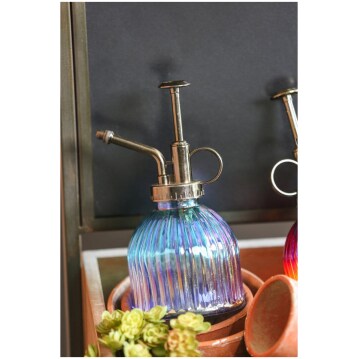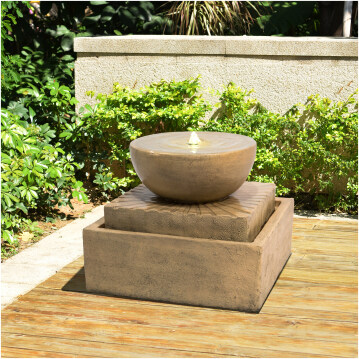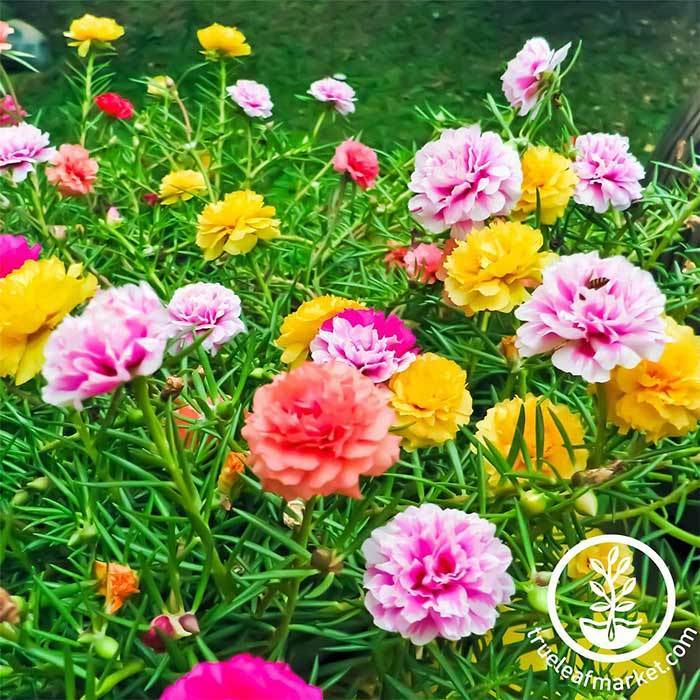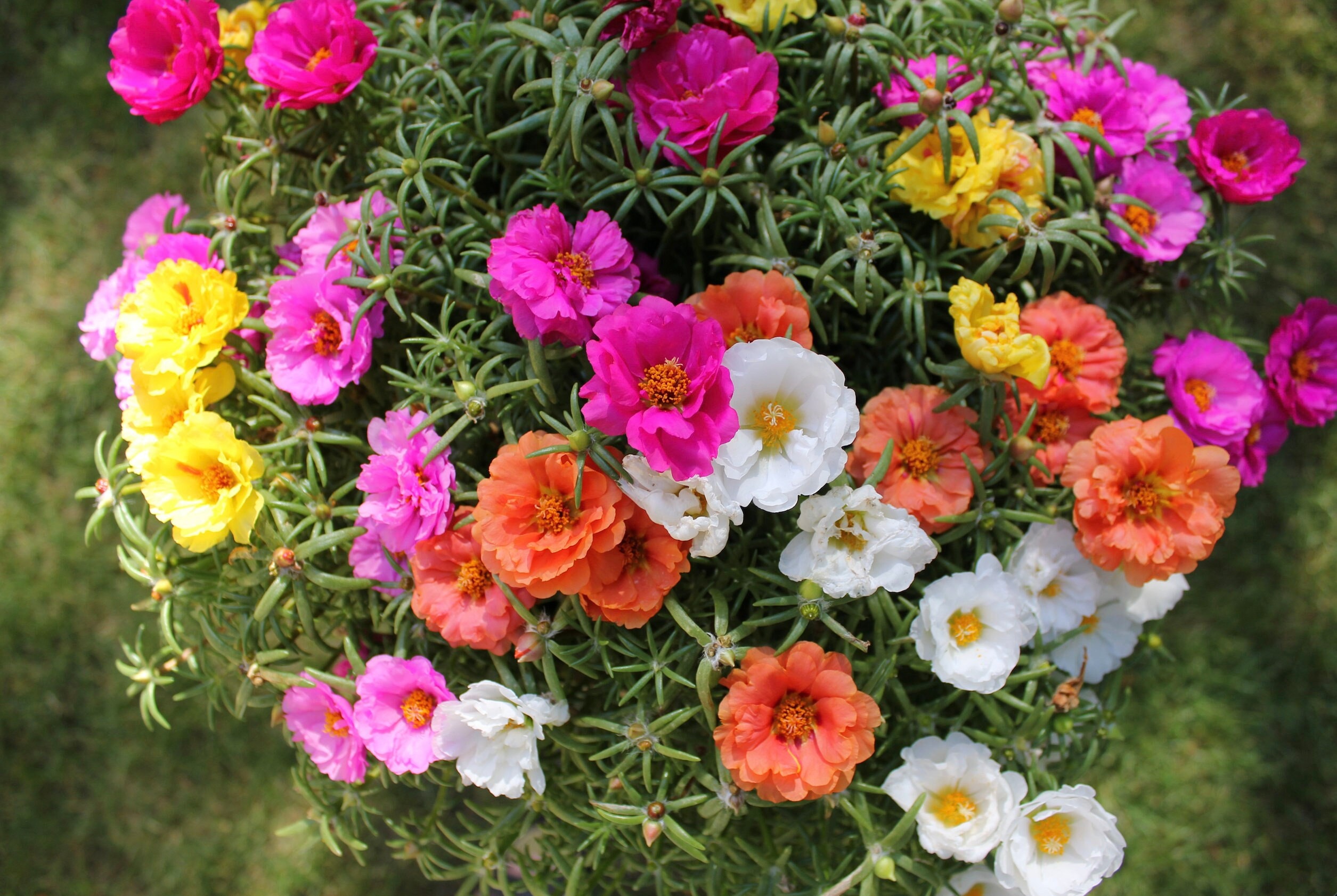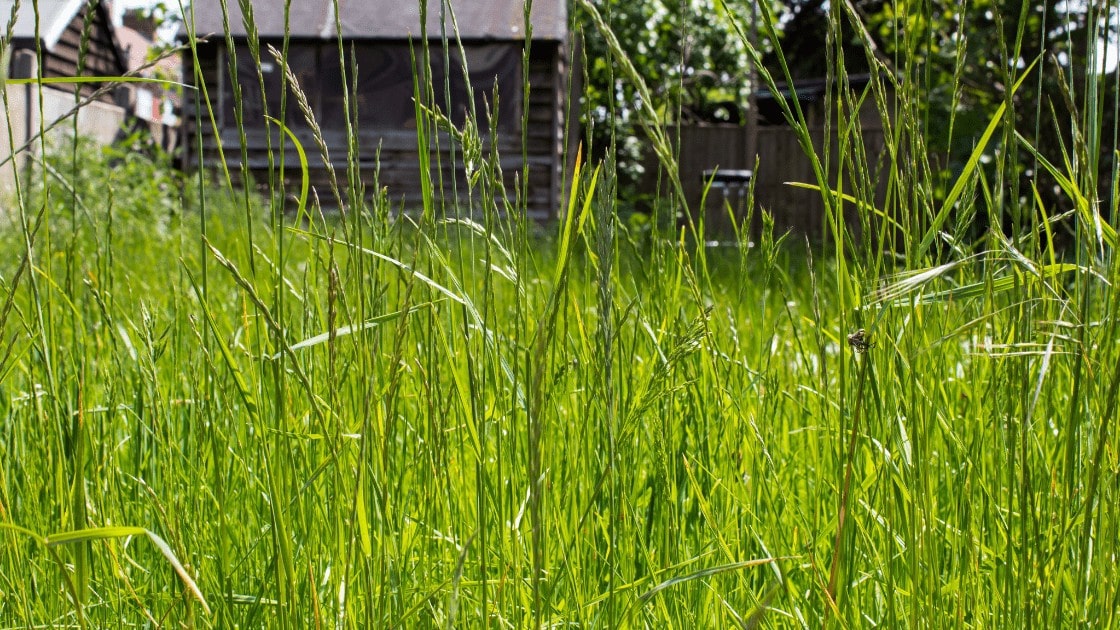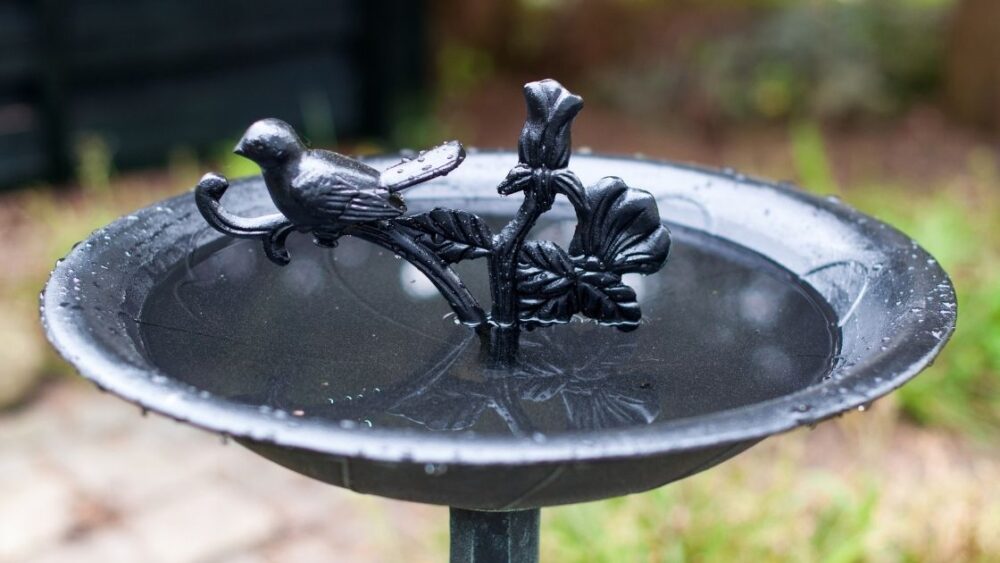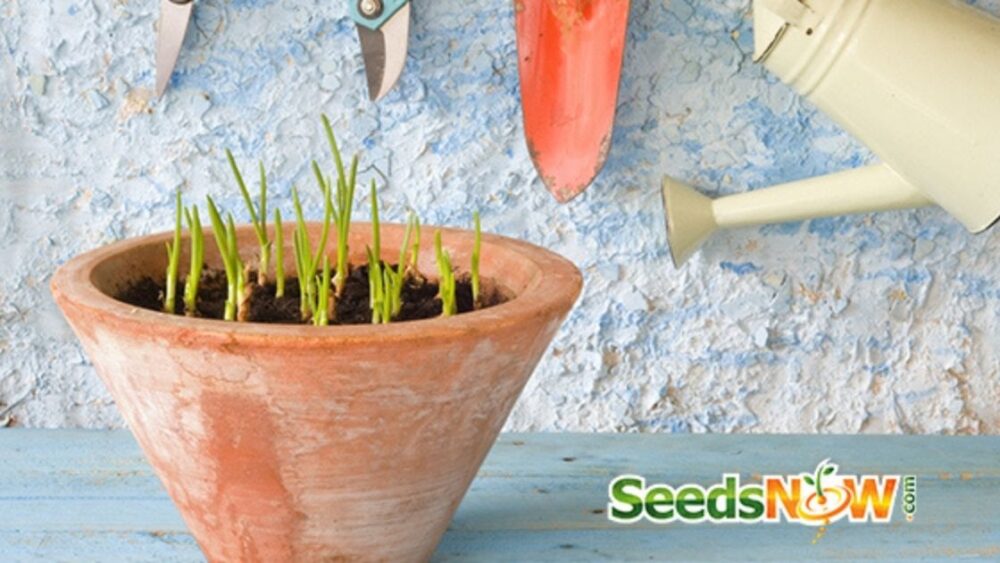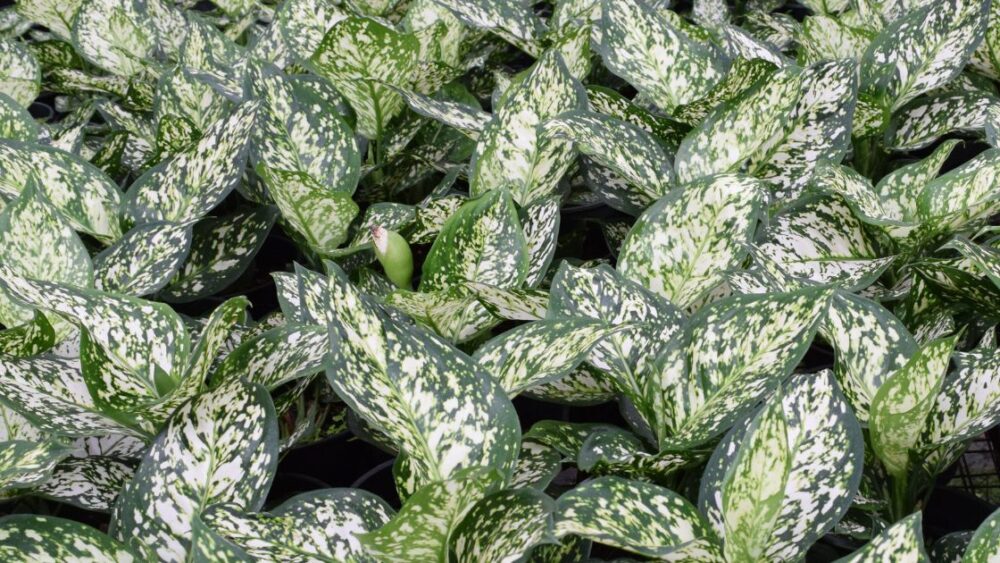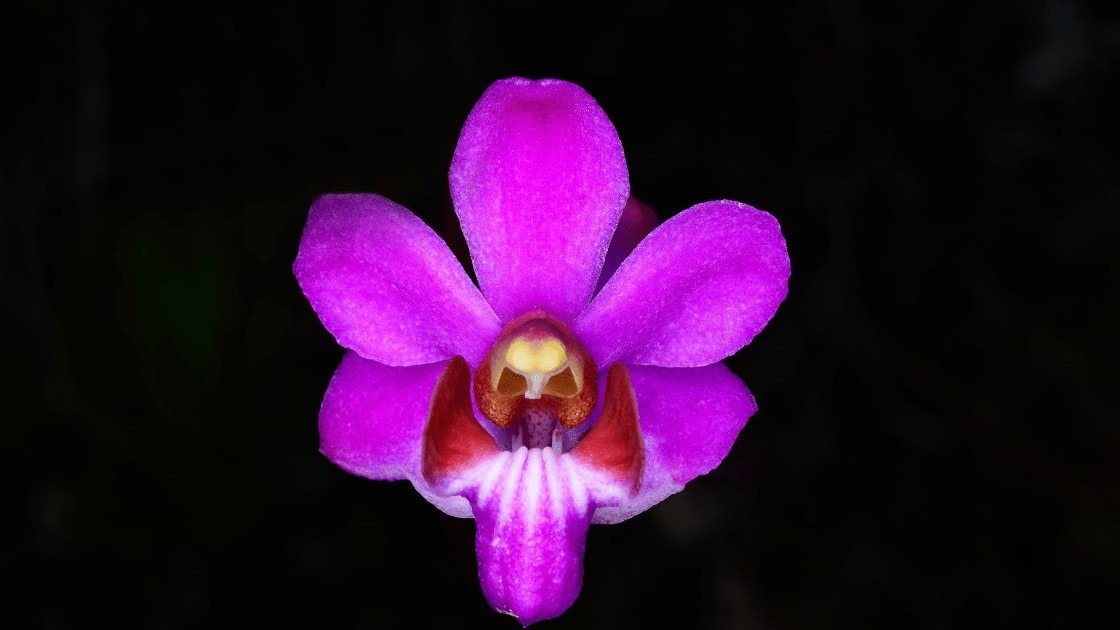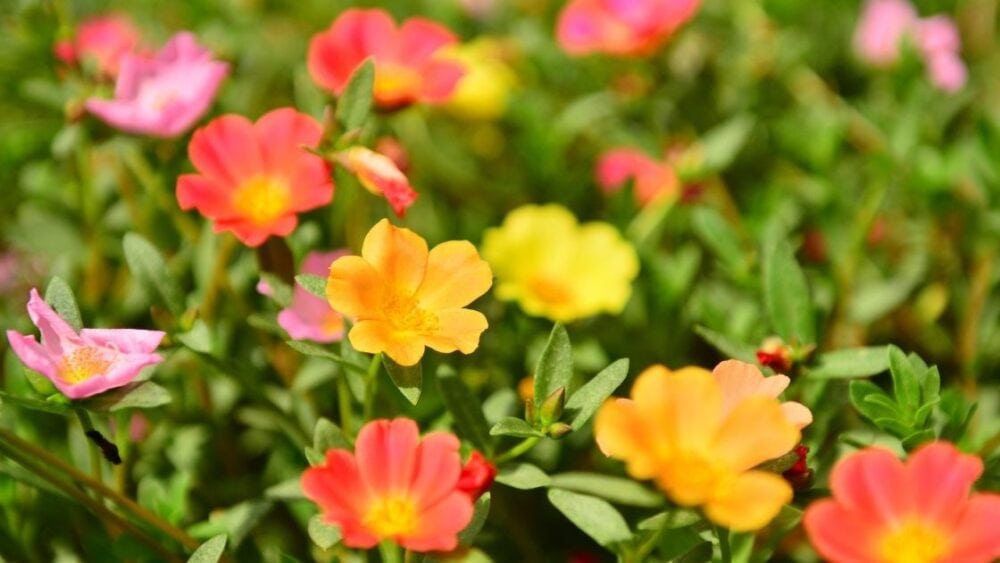
Wilting and drooping is not very common in Portulaca and is usually caused by a very unsuitable soil, severe overwatering or simply forgetting to water for more than a few weeks. Let’s explore the exact causes of wilting in this plant and go into its specific growth requirements!
Portulaca (usually referring to Portulaca grandiflora, but other species as well), also known as the moss-rose purslane, is one of the most difficult to kill succulents – in its natural habitat it is somewhat of an invasive weed and spreads very easily, quickly overtaking large areas of land. It is also one of the fastest growing succulents, making it great for impatient gardeners. It’s in the same family as the common purslane (Portulaca oleracea), which is often found growing in urban areas along pavement edges.
What Causes Portulaca/Purslane to Wilt?
The most obvious cause of wilting is dehydration due to lack of water. Overwatering however, can also cause similar symptoms, although not as easily and not as quickly as in other succulents. Here are a few potential causes of wilting:
Browse our Affiliate Products
Dehydration
This is the easiest cause to identify and cure, because the problem quickly disappears shortly after a single generous watering.
Overwatering
Portulaca is not prone to root suffocation caused by overwatering and its shallow roots can deal with low-oxygen conditions relatively well. However, multiple consecutive overwatering’s can still drown the roots and lead to paradoxical wilting that looks like dehydration. Let the soil dry up a bit while removing the plant from the direct sun. It will recover in a few days or a few weeks in case some root rot has set in.
Sun/Heat Stress With No Prior Acclimation
Many nursery plants and succulents have spent most of their life in closed greenhouses, making the plants unused to the outdoor environment. Those plants can quickly wilt when brought outdoors.
The same is true for Portulaca seedlings that have been moved from indoors to the outdoors. Gradual acclimation over 5-10 days solves the issue. The problem is related to the high heat and low humidity environment created by the direct sun, but it’s also caused by the high UV-B levels.
UV-B is the range of wavelengths that causes sunburn in humans as well, and plants have special receptors for it, called UVR-8.
Once those receptors get activated, the plant starts manufacturing natural sunscreen molecules – a process, which can take a few days. Transparent greenhouse materials and glass windows filter out 99% of the UV-B, making it impossible for the plants to acclimate.
Fungal Pathogens
Portulaca is resistant to pathogens, but if the plant is stressed, it can still succumb to various fungal diseases affecting both the roots and the stems. The problem often starts because of tissue damage, which allows the fungus to infect the plant.
That tissue damage can be caused by physical damage, drought stress, overwatering and other factors. An anti-fungal spray, combined with more direct sunlight and less frequent watering will cure the problem and let the Portulaca recover.
Insufficient Light
Mature plants which are moved to a light-deficient environment may suddenly start having trouble transporting water to their leaves, due to energy deficiency. The wilting is usually preceded by some yellowing and pale growth. The problem disappears in a matter of days when light is supplied again.
Root Problems
Portulaca has tough roots, which grow relatively quickly, making the plant resistant to root rot, at least compared to other succulents. However, if your plant looks severely ill and nothing you do helps, the problem may still be in the root zone.
Although Portulaca is not easy to repot, due to its horizontal and shallow root structure, if the plant is sick and you’re out of options, it’s still a good idea to uproot it, clean the roots and repot in a fresh, different soil, specifically created for succulents.
What Causes Portulaca to Droop?
Some slight drooping can be natural during the hottest days and doesn’t necessarily point to a problem. You need to worry about this only if the problem becomes severe and doesn’t go away when the plant is provided shade and/or watered.
Do All Purslane Species Wilt/Droop When Stressed?
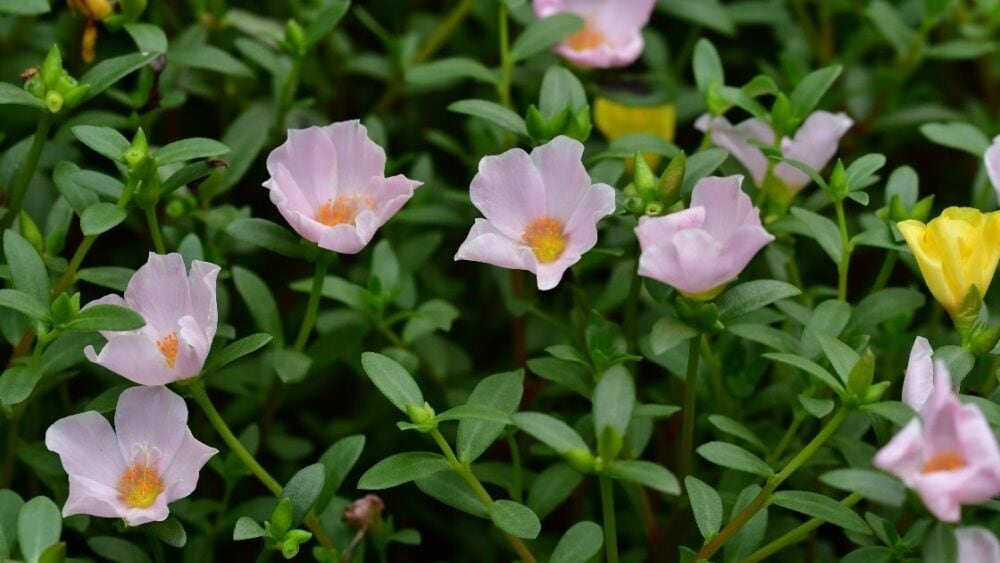
There are around 100 different purslane species (belonging in the Portulaca genus). The genus has a worldwide distribution and different species can have different temperature, sunlight and drought tolerances and preferences – species that come from Australia, like P. bicolor can usually take more heat than others. However, there are only a few commonly available Purslane species and most are either endangered or not suitable for garden cultivation. The causes of wilting, drooping or disease are similar in all the commonly available species.
Optimal Growing Conditions for Portulaca
Portulaca likes strong sunlight, well-draining soil and occasional watering. It’s one of the most ‘thriving on neglect’ succulents and is very difficult to kill. It can be planted outdoors in most climates and will self-seed every year before being killed by the frost.
How Much Sunlight Does It Like?
Portulaca likes the direct sun – in its natural environment it grows in open fields and rocky areas with practically zero shading. The sunnier the planting spot, the more flowers Portulaca will give you.
Minimum, Maximum and Optimum Temperatures
Portulaca can stand the heat of the direct sun, but grows the fastest when there is some temperature drop at night (below around 70F). This naturally happens outdoors, but can’t be practically achieved indoors. This succulent is not cold-hardy, but will self-seed and come back during the spring when planted outdoors in garden beds. Temperatures a few degrees below freezing will likely kill the plant.
Best Type of Soil
Portulaca grows well in any well-draining soil, regardless of how sandy or rocky it is. Very sandy soils can benefit from some fertilization – unlike other succulents that grow very slowly and recycle nutrients from their dying leaves, Portulaca is a fast growing plant that is usually started from seed.
Without fertilization, it won’t thrive in poor soils and won’t flower profusely. The fertilizer application frequency depends on how rich in nutrients the soil is – in very poor soils, this succulent can be constantly watered with 1/5th strength fertilizer solution, with the occasional pure water application to flush the accumulated fertilizer salts.
How Much Water Does Portulaca Need?
Portulaca is very drought-resistant, but also tolerant to overwatering – a combination that is rare with succulents.
Depending on the potting container or foliage density of the outdoor bed, the ideal watering frequency can range from once a week to once a month. Letting the top layer of the soil go bone-dry between each watering is a general rule that applies here as well.
Can It Be Planted Outdoors or Does It Do Better in Pots?
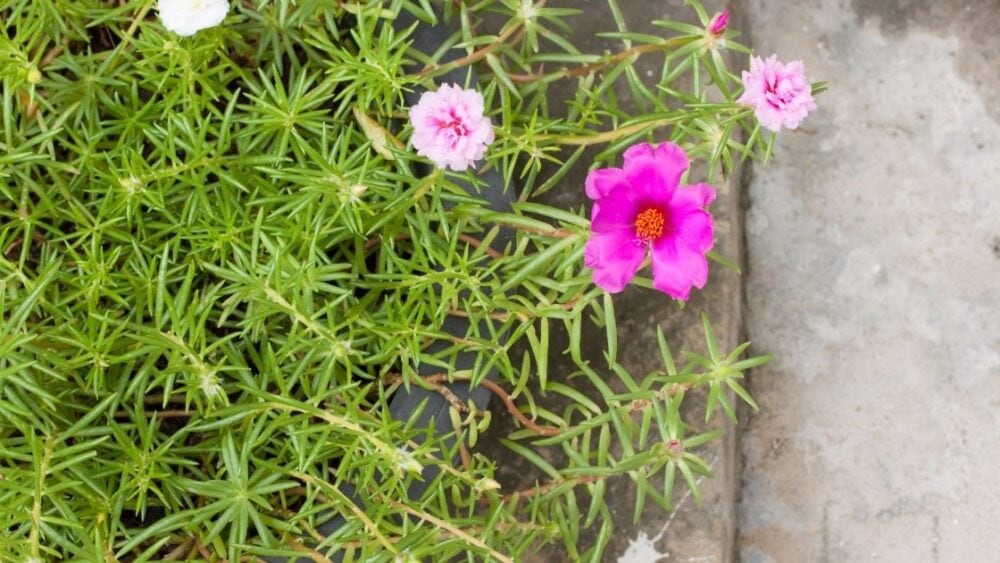
Portulaca does well in containers, as well as in raised garden beds. It can also be used for rock gardens or planted basically anywhere, given that the spot receives a few hours of direct sunlight every day. It has a very shallow root structure of 1 to 3 inches in depth, so tall potting containers are not necessary. For more information on pots, check out this article, What is the perfect pot for my plants?
Is Deadheading Recommended?
Deadheading (removing wilting flowers) is not necessary and will prevent seed formation, which is often desirable for self-seeding. If you don’t care about collecting seeds, feel free to remove any dying flowers, but this won’t really benefit the plant. If you want to know what deadheading is, also check out this article about deadheading roses. What Do You Do After Your Rose Petals Fall Off?
My Portulaca Is Dying! What Should I Do?
Make sure that the basic growth requirements are met and that you aren’t using regular potting soil. Regular soils retain too much water and can cause many problems for succulents, including Portulaca. Ensure that the plant receives at least a few hours of direct sunlight every day (window-filtered direct sunlight is also okay for indoor plants).
If you can’t diagnose the issue and nothing you do seems to be helping, repotting is a good general solution to many different problems. Moving the plant to a new location after inspecting it for bugs or fungal diseases is also a great idea. If there is a lot of visible stem rot or tissue damage, consider spraying with anti-fungal sprays.
Does Portulaca Deal Well With Unfavorable Growing Conditions?
Portulaca is extremely tough and can survive high heat and severe drought for a long time.
However, it doesn’t grow well in very shaded spots and has trouble thriving in very compacted, compost-rich soils. It cannot survive temperatures more than several degrees below freezing and its tender leaves get quickly damaged by the expanding freezing water.
Because it’s a fast-growing succulents, very sandy soils may lack the nutrition to sustain vigorous growth, which is why it’s a good idea to apply a diluted succulent fertilizer with every other, or every third watering.
Purslanes are extremely adaptable, because of their ability to switch back and forth between C4 and CAM photosynthesis. This means that under severe drought, they are able to perform half of the photosynthetic process (the absorption of CO2) at night, when the temperatures are cooler.
When generously watered and the temperatures are lower, Portulaca reverts back to C4 photosynthesis, which is the type of photosynthesis performed by non-succulent plants, like tomatoes and peppers. This enables it to grow much faster, but it will temporarily become less drought-tolerant.
Conclusion
Portulaca is an extremely adaptable succulent, which can take a lot of abuse – it can survive severe drought as well as careless overwatering and as long as it receives plenty of light, you shouldn’t experience any problems.
Because wilting or other stress symptoms are uncommon in this plant, they usually signal either a severe lack of one of the basic requirements (airy soil and plenty of sun) or a fungal disease.
In any case, the best solution is usually to move the plant to a sunnier location, play around with the watering and fertilizer application frequency and if all else fails – to repot it in some new soil. Inspect the plant for bugs or fungal diseases and apply insecticides or fungicides accordingly.



